Learning the notes across your guitar’s fretboard is a foundational skill that opens up a world of musical possibilities. While the seemingly long fretboard can appear daunting at first, understanding its layout is more accessible than you might think. With focused practice and a few key strategies, you’ll be navigating the neck like a pro in no time. Let’s dive into demystifying All Notes On Guitar.
The Natural Musical Alphabet: Your Starting Point
Music, at its core, is built upon a simple alphabet. Unlike the ABCs you learned in school, the musical alphabet consists of just seven natural notes: A, B, C, D, E, F, and G. These are considered “natural” because they don’t include sharps or flats. Sharps and flats, the variations between these natural notes, come next. Mastering these natural notes is your crucial first step in learning all notes on guitar.
 Diagram of the Natural Musical Alphabet
Diagram of the Natural Musical Alphabet
Understanding Sharps and Flats: Navigating the Half Steps
Sharps (#) and flats (♭) represent the notes that fall in between the natural notes. Each fret on your guitar represents a half-step in musical distance.
A sharp (♯) indicates a note that is a half-step higher than a natural note. For example, A♯ is one fret above A.
Conversely, a flat (♭) indicates a note a half-step lower than a natural note. So, A♭ is one fret below A.
Here’s where it can get a little tricky: a single note can have two names depending on whether you are moving up or down. The note between D and E, for instance, is called D♯ when ascending from D, and E♭ when descending from E. Context within a musical key often dictates whether to use the sharp or flat name.
 Illustration of Sharps and Flats on the Fretboard
Illustration of Sharps and Flats on the Fretboard
Pro Tip: Think of it this way: “Sharp” means you’re going up in pitch, like you’re aiming for something sharp or high. “Flat” means you’re going down, becoming lower or flat.
The BC and EF Rule: The Exceptions to the Rule
Among the natural notes, there’s a crucial rule to remember: there are no sharps or flats between B and C, and between E and F. These pairs are already a half-step apart.
Moving a half-step up from B takes you directly to C. Similarly, moving a half-step down from F lands you directly on E. This is a key rule for quickly learning all notes on guitar fretboard.
Open String Names: Your Fretboard Anchors
In standard guitar tuning, the six strings, from thickest to thinnest, are tuned to E, A, D, G, B, and E. Playing a string “open,” without pressing down any frets, produces these exact notes. These open string notes serve as your foundational reference points for navigating the fretboard. Notice that the thickest (low E) and thinnest (high E) strings are both E notes, meaning the note patterns will repeat across the neck, simplifying memorization.
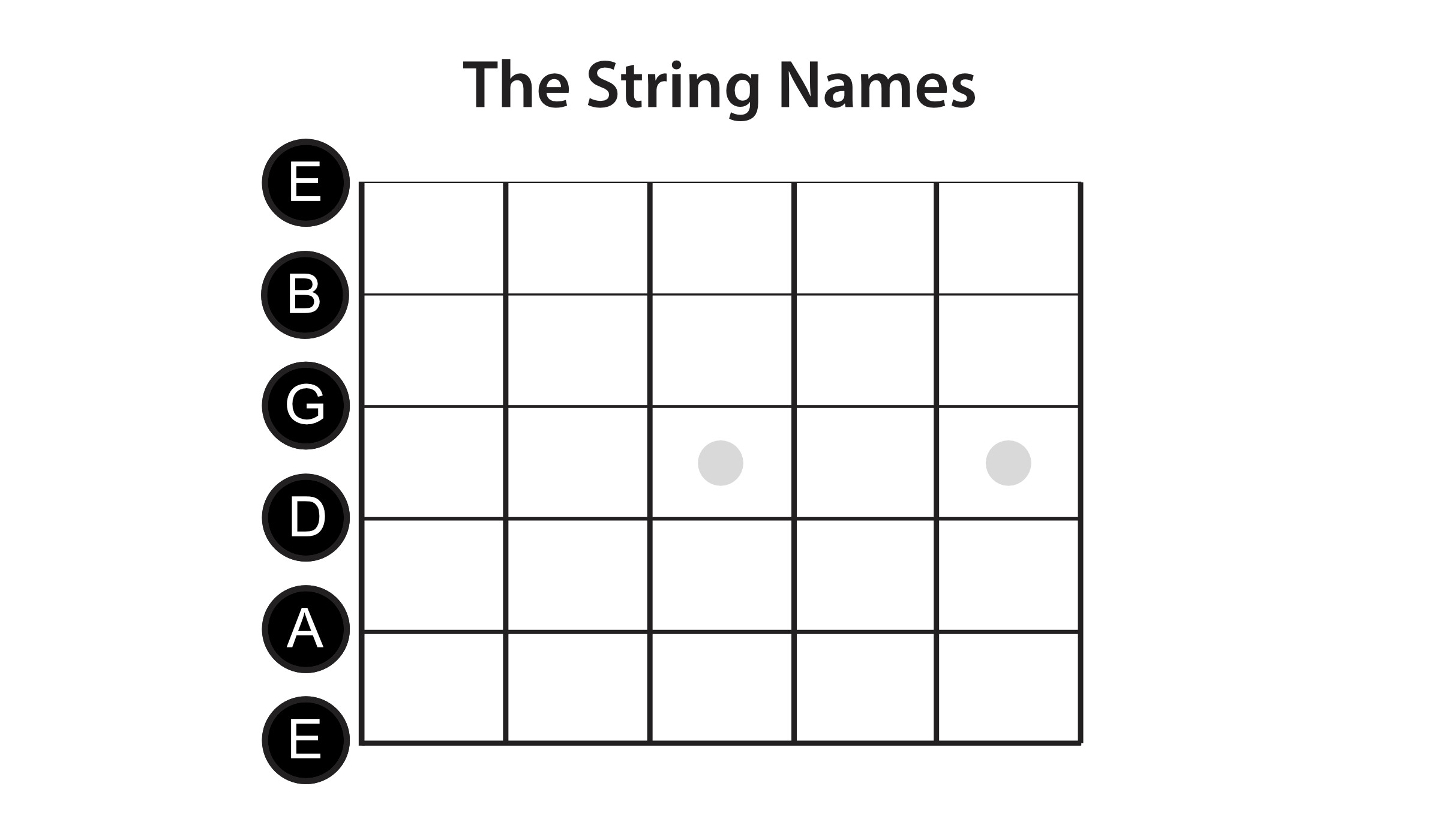 Diagram showing Guitar String Names in Standard Tuning
Diagram showing Guitar String Names in Standard Tuning
Counting Up the Frets: Mapping the Notes
With your open string notes as starting points, you can now begin to map out all notes on guitar by counting up fret by fret. Each fret you move up is a half-step higher in pitch. Remember the musical alphabet and the BC and EF rule as you ascend each string.
E String Notes:
Starting with the open E string, each fret increases the note by a half step.
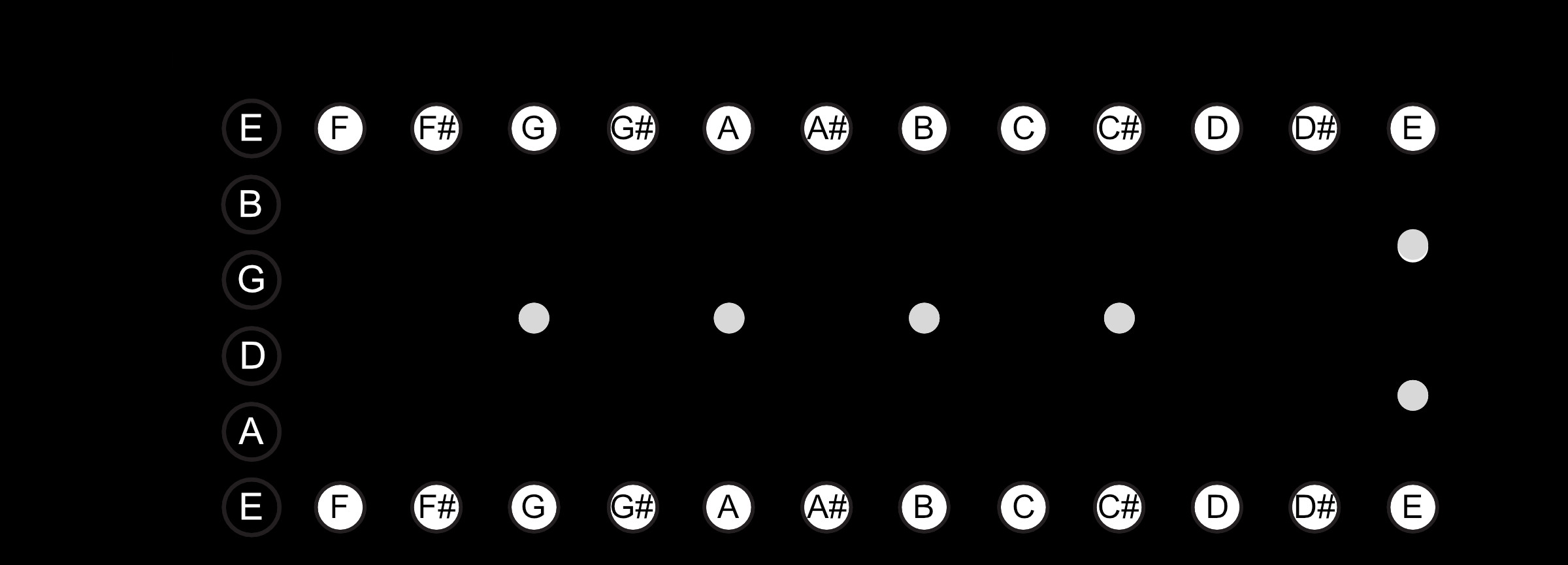 Diagram of Notes on the Guitar E String
Diagram of Notes on the Guitar E String
A String Notes:
Similarly, starting from the open A string, you can find all notes by moving up the frets.
 Diagram of Notes on the Guitar A String
Diagram of Notes on the Guitar A String
D String Notes:
Continue this pattern on the D string, always remembering the musical alphabet and half-step increments.
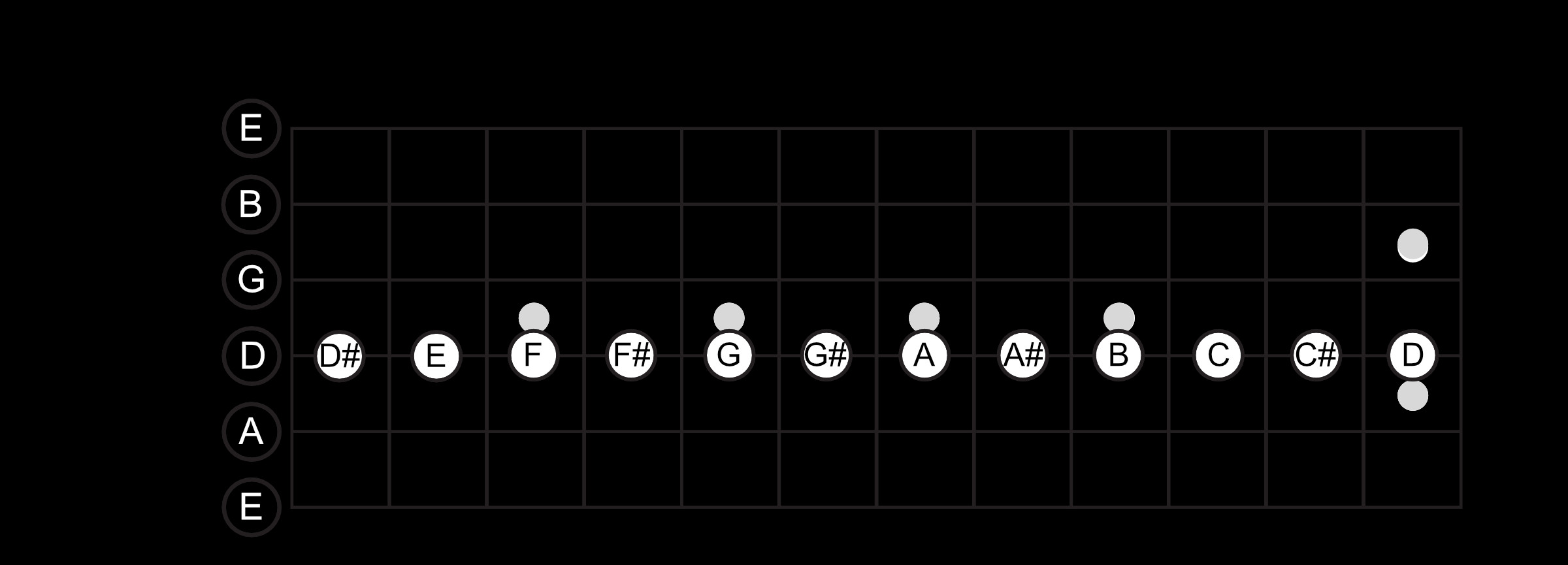 Diagram of Notes on the Guitar D String
Diagram of Notes on the Guitar D String
G String Notes:
Apply the same logic to the G string to uncover all notes along its length.
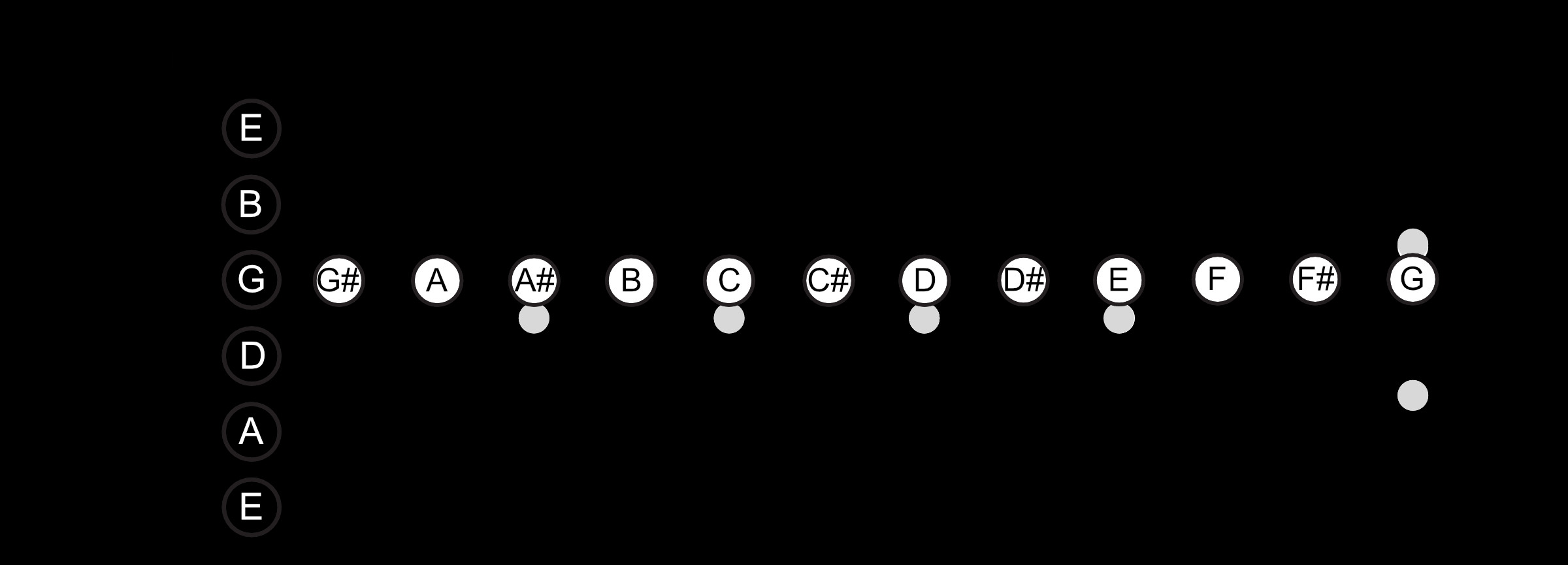 Diagram of Notes on the Guitar G String
Diagram of Notes on the Guitar G String
B String Notes:
Finally, map out the notes on the B string using the same method.
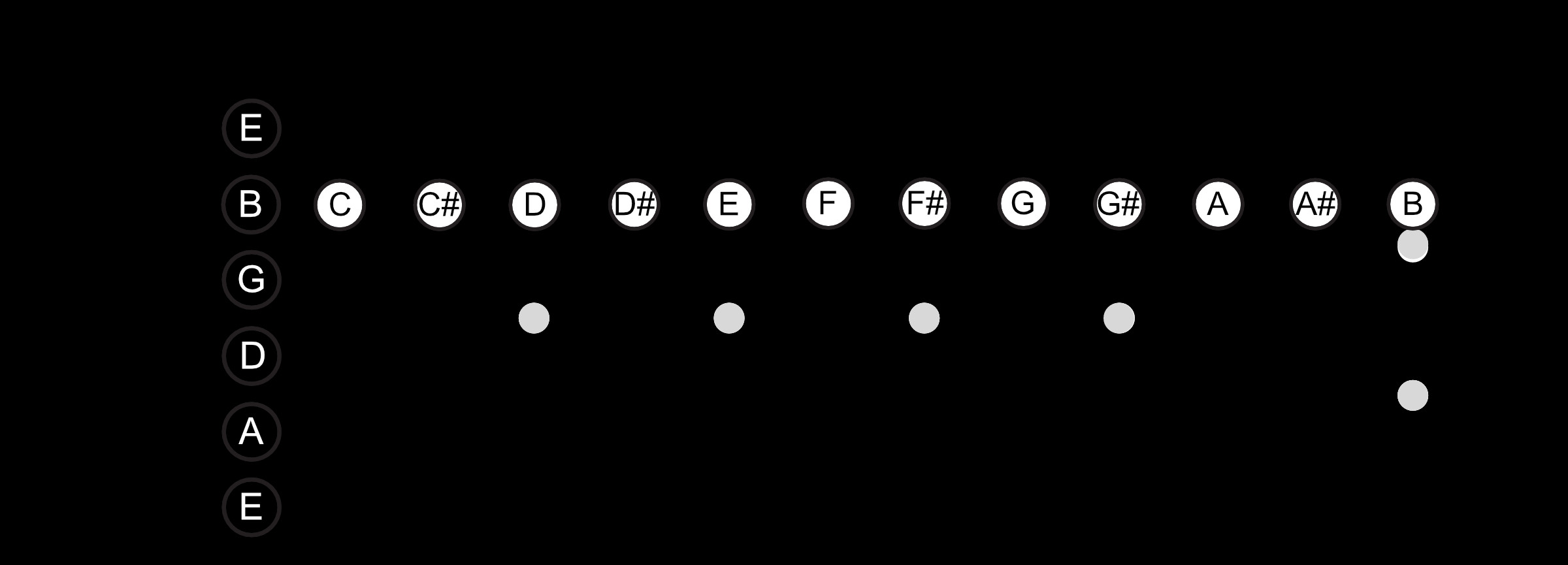 Diagram of Notes on the Guitar B String
Diagram of Notes on the Guitar B String
The 12th Fret Octave: The Fretboard Secret
Here’s a game-changing shortcut for learning all notes on guitar: the notes repeat at the 12th fret! Look at the B string diagram above. The note at the 12th fret is B again, exactly one octave higher than the open B string. The 13th fret will be C, just like the 1st fret. This means you only truly need to memorize the notes up to the 12th fret, significantly reducing the learning load.
Octave Centers: Navigating with Reference Points
Another powerful technique to quickly locate all notes on guitar is understanding octave shapes. Octaves are notes that sound the same but are at different pitches. You can use consistent octave patterns across the fretboard to find any note by referencing known notes on the E and A strings. The most common octave shape involves moving two strings down and two frets to the right (or left).
For instance, to find a G note on the D string, you can reference its octave position relative to a G note on the lower E string.
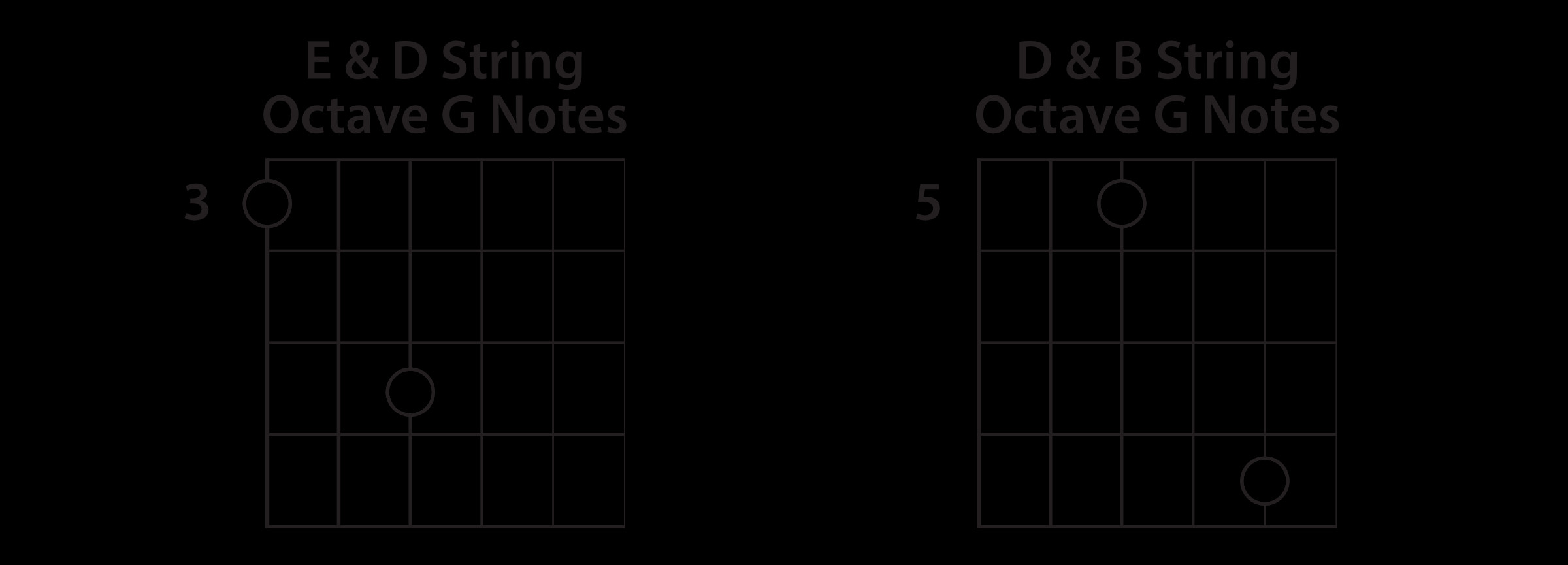 Diagram showing Octave Shape between E and D Strings
Diagram showing Octave Shape between E and D Strings
Similarly, you can use the A string as a reference to find notes on the G string, and then the G string to find notes on the high E string, all using consistent octave shapes.
 Diagram showing Octave Shape between A and G Strings
Diagram showing Octave Shape between A and G Strings
Putting It All Together: Practice and Application
The key to mastering all notes on guitar is consistent practice. Start by focusing on memorizing the notes on your E and A strings. Once you have those down, the octave shapes and repeating patterns will make learning the rest of the fretboard much easier. Knowing the notes is not just an academic exercise; it’s crucial for understanding chords, scales, and ultimately, for expressing yourself musically on the guitar. Embrace the journey, practice regularly, and you’ll unlock the full potential of your instrument.
